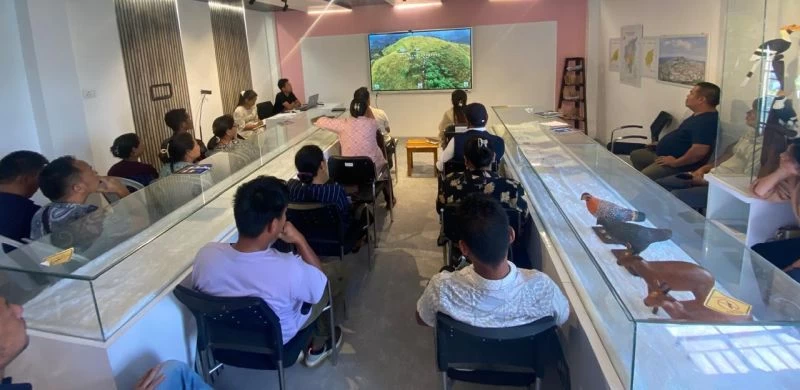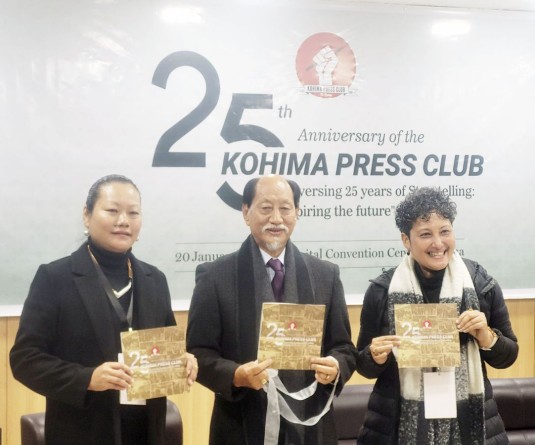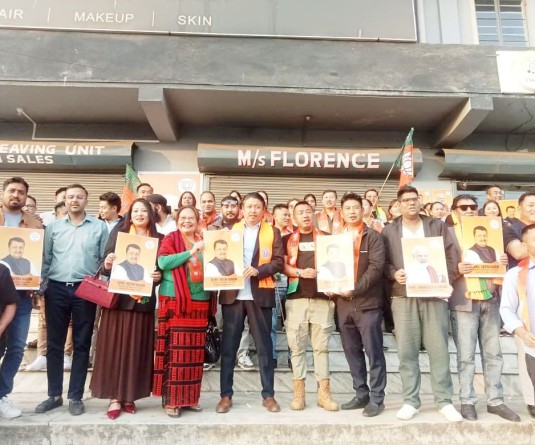The annual review meeting for all the implementing villages of Nagaland Forest Management Project under Mokokchung was held on April 29 and 30.

• Records plantation of 9,17,302 saplings in five different model areas
• 42 Self Help Groups formed in project implementing villages
Mokokchung, April 30 (MExN): A two-day annual review meeting for all the implementing villages of the Nagaland Forest Management Project (NFMP) was held to review the implementing works and also assess the benefits and sustainability of the projects in the villages on April 29 and 30.
The Nagaland Forest Management Project (NFMP) is supported by the Japan International Cooperation Agency (JICA) with the aim to improve forest ecosystem and support income generation by rehabilitation of jhum area and provision of livelihood support thereby contributing to sustainable forest and environmental conservation and livelihood improvement.
Since 2020, the Mokokchung Forest division has been implementing the NFMP-JICA project and covered an area of 4577 hectare, planting 9,17,302 saplings in five different plantation model areas (JAF-Jhum Agro-Forestry model; JFF-Jhum Fallow Forestry model; JCF-Jhum conversion to Forestry model; JCC-Jhum Conversion to Community Conservation area and PEC- Protection and expansion of Community Conservation Areas).

In Mokokchung district, under the batch-1, the villages include Changtongya New, Mopungchuket and Mongsenyimti. They have covered plantation sites and conservation sites of 999 hectare planting around 1,80,000 no of saplings.
Under the batch-2, there are 6 villages comprising of Sungratsu, Chakpa, Longmisa, Salulemang, Merangkong and Yaongyimsen. The total area covered under plantation and conservation site is 2416 hectare and seedlings planted is around 5,12,000.
The batch-3 villages are Aliba, Chungtia, Longkong, Longpa, covering an area of 1163 hectare, planting 2,25,000 saplings and Kelingmen where the area designated area is 461 hectare and with seedlings of 98,000 saplings to be planted and gap replacements to be done.
Under batch-IV, the villages to be taken up are Mangmetong, Sattsu, Longkum and Liroyim covering a projected area of 1190 hectare to be covered.
The programme was held under the DFO cum DMU Head, Dr Sentitula, IFS DFO Mokokchung, Alemwapang, Assistant Conservator of Forest cum ADMU Head, Sashilemla, Range Officer cum FMU head Mokokchung, Moamongba Assistant Conservator of Forest and the facilitating NGO team of Mokokchung (i.e. Nagaland Development Outreach) led by the team leader, Dr Akumtoshi, all the Executive field staffs, the DMU team, the Supervisors and the community mobilisers, all the JFMC presidents and SHG representatives.
The Joint Forest Management Committee (JFMC) presidents gave PowerPoint presentations on their ongoing works. The villagers has been raising nursery in small quantities before coming of the project, however, with the help of the project, the JFMCs are able to raise in terms of thousands incorporation their traditional knowledge and technical knowledge.
After planting in their intervention sites they are able to provide saplings to the villagers as well as other department projects and their skills have been enhanced. Through this project they have gained more perspectives on forest and wildlife conservation and also gained better documentation and reporting skills.The infrastructures developed through entry point activities and water harvesting structures has proved to be an asset for the community and the concept of convergence and community contribution towards any Government related schemes has been understood in a practical manner.
To enhance the livelihood of the community along with the conservation efforts, Self Help Groups has been formed in all the villages in due consultation and approval of the JFMCs in the implementing village. A total of 42 SHGs have been formed in the project implementing villages and all the SHGs are actively employed in various activities. Through this activities the women has been able to uplift the financial status and they are able to prepare their own business plans for the activity and they are able to evaluate their strength, weakness, opportunities and threats as they keep on revolving the funds in each cycle of activity.





